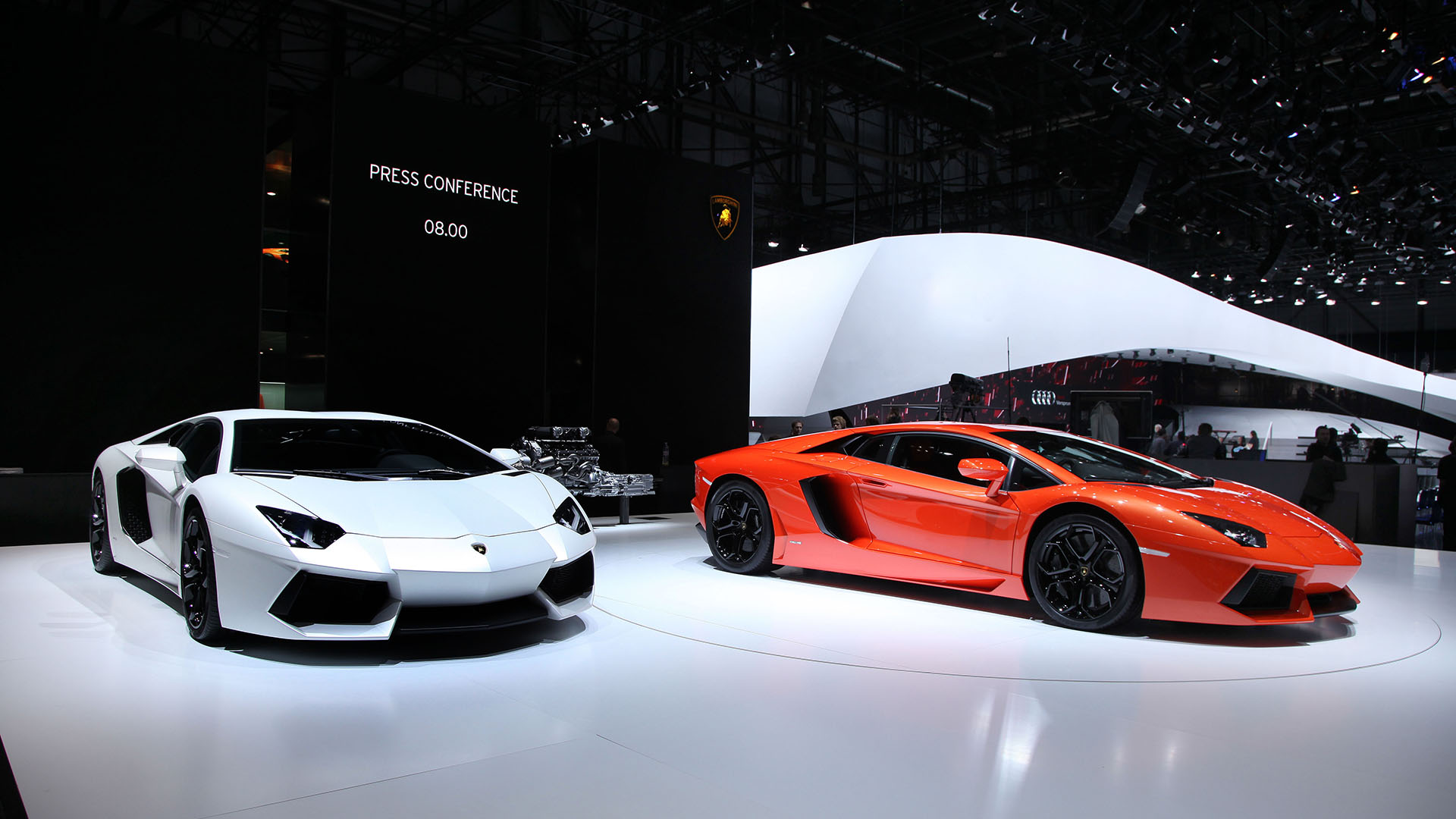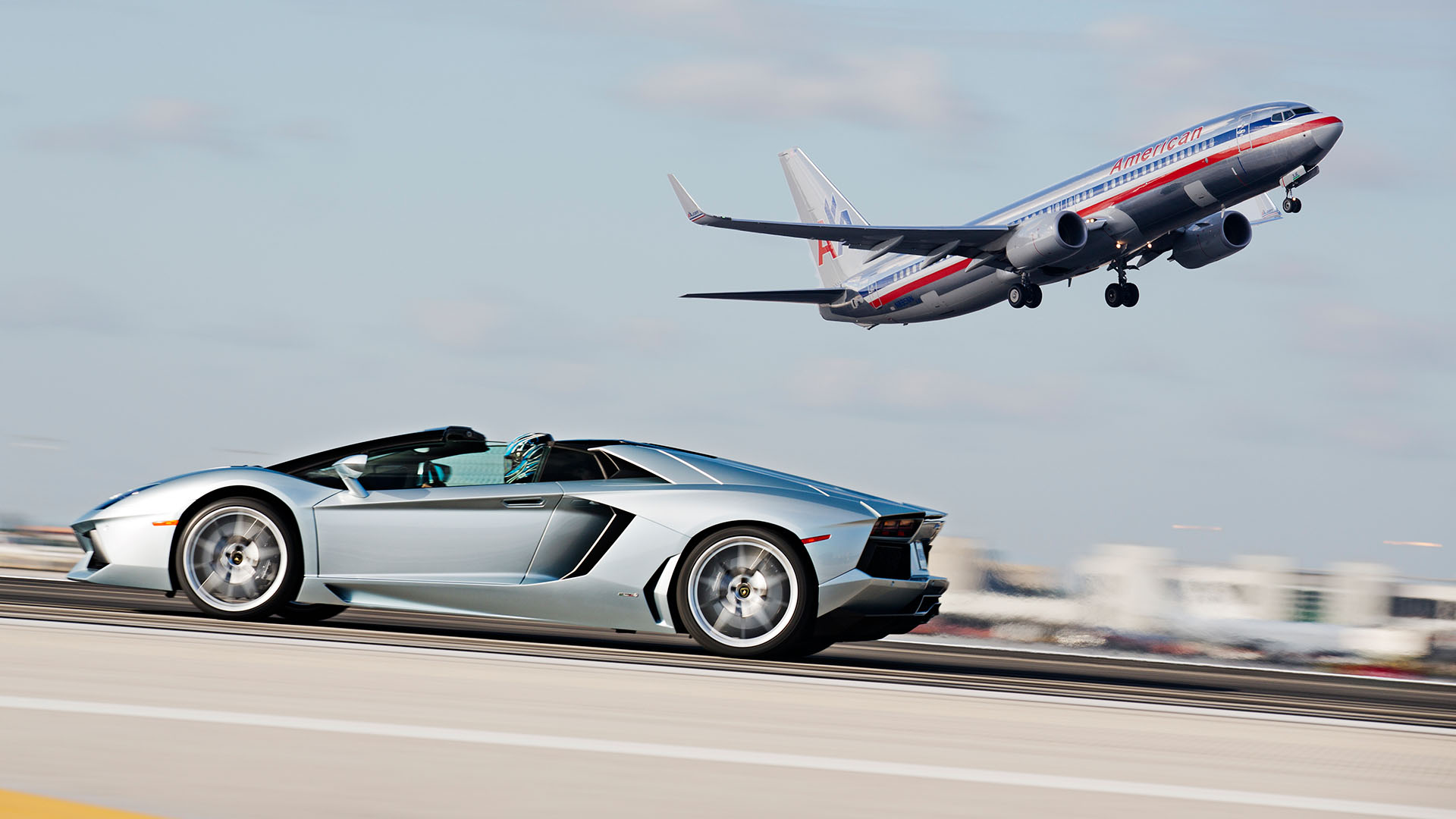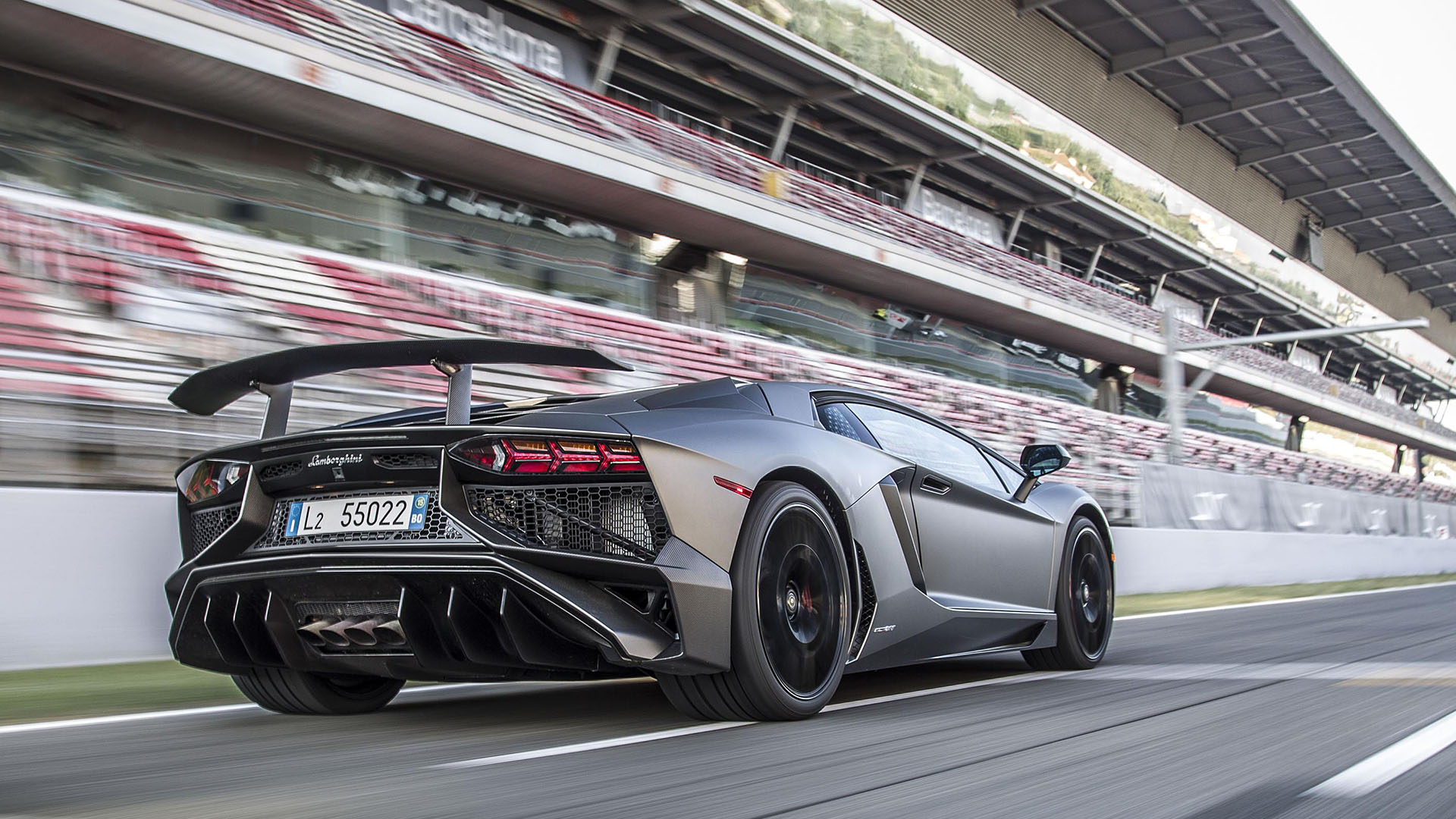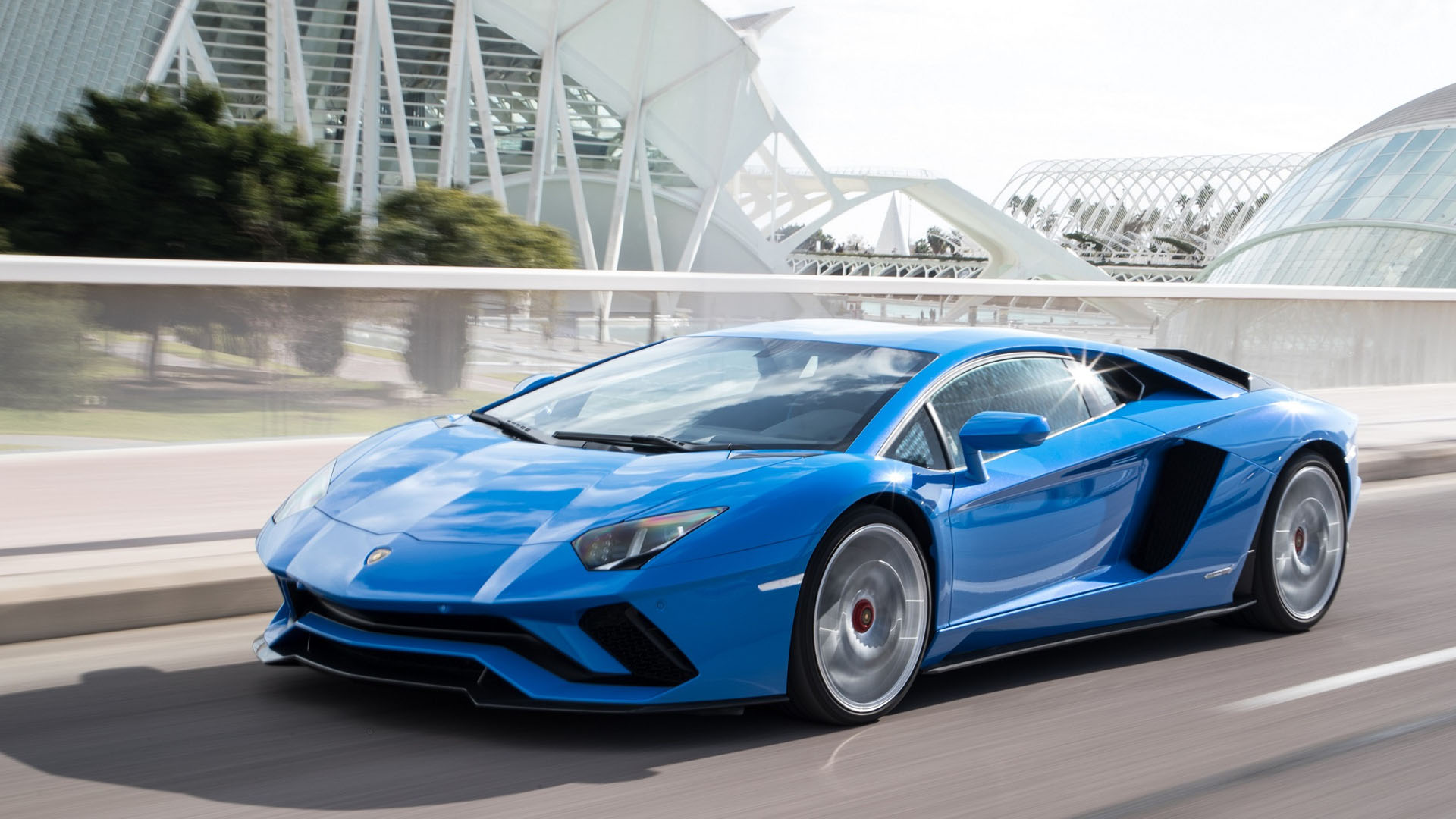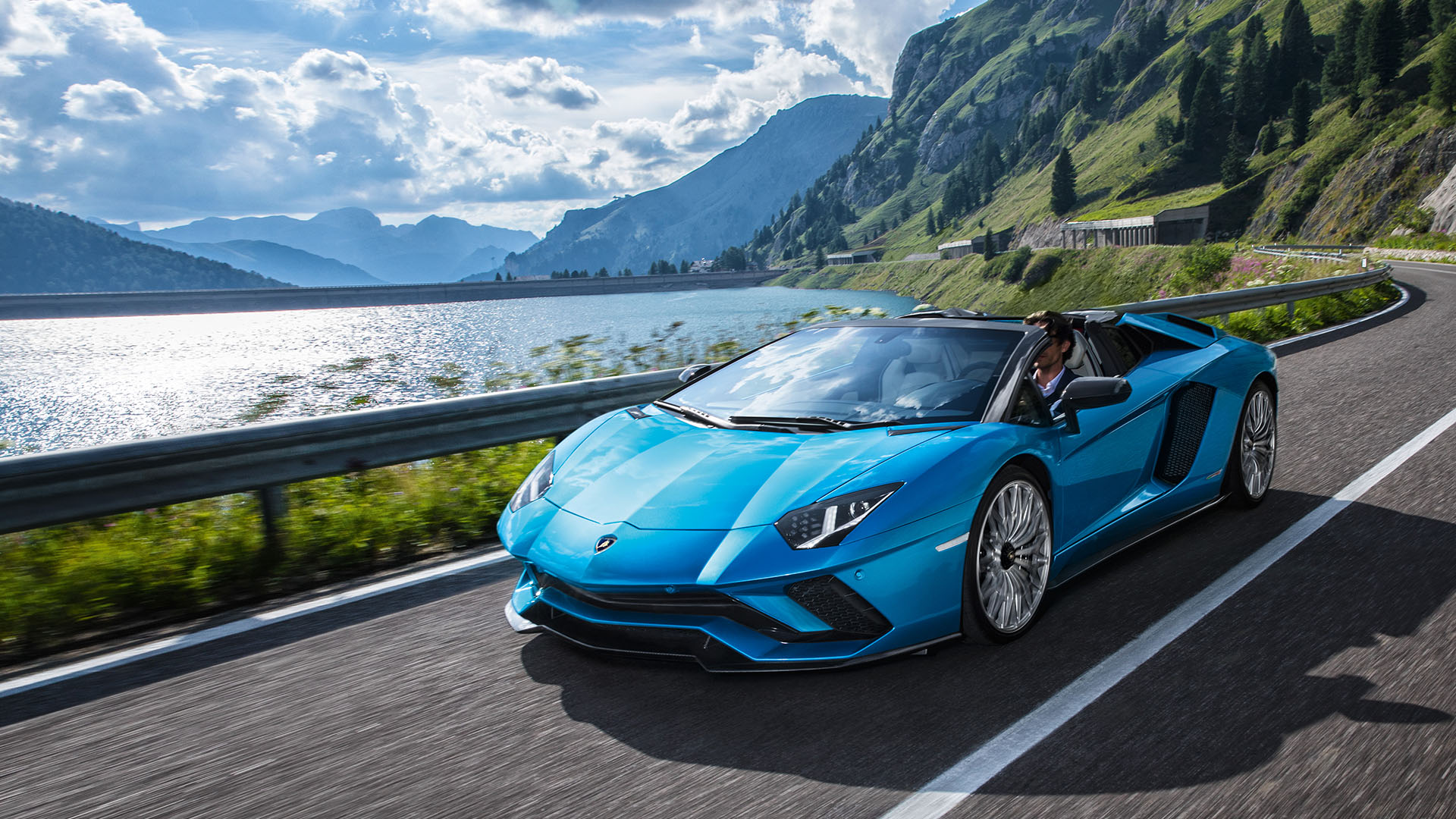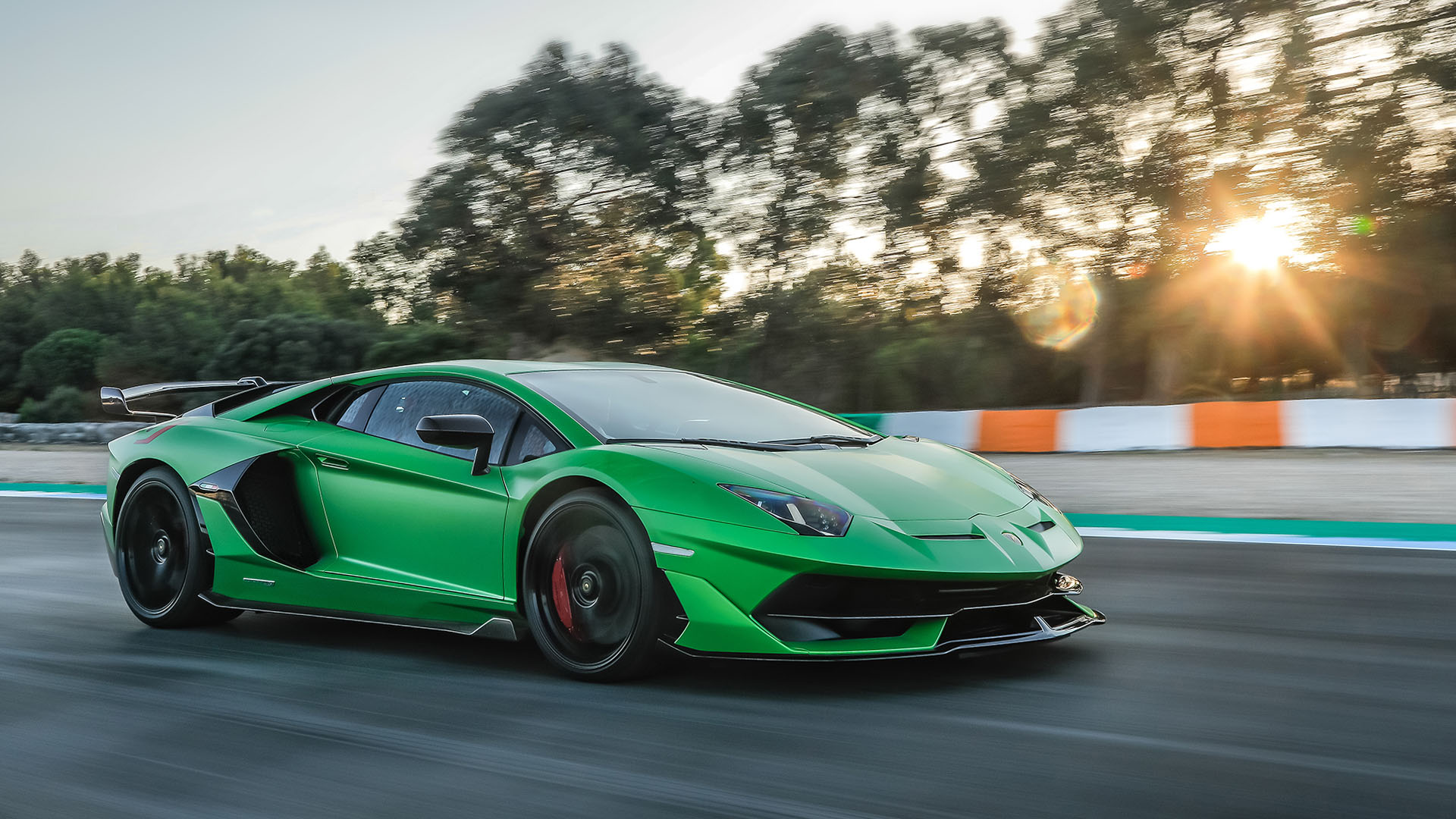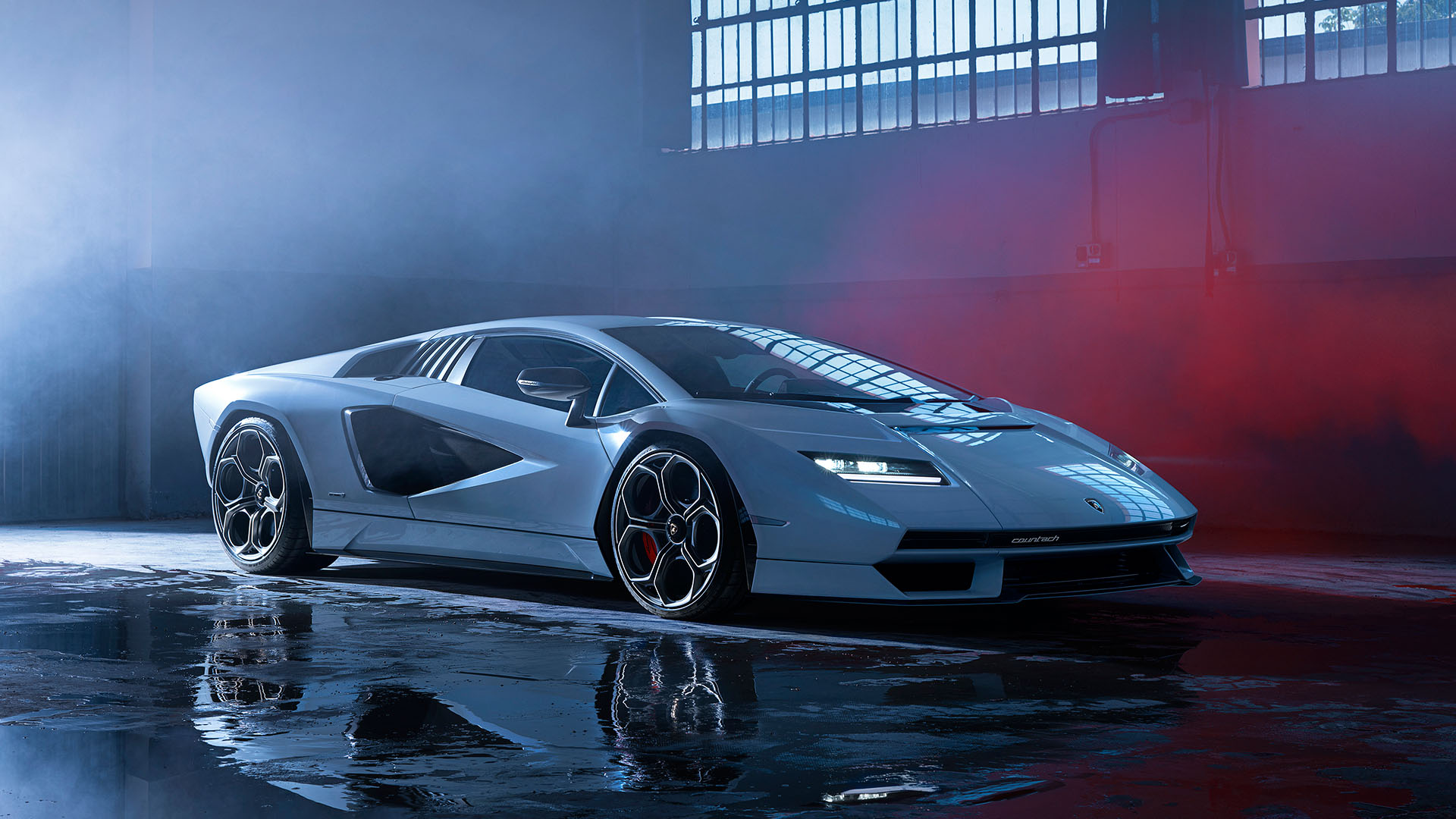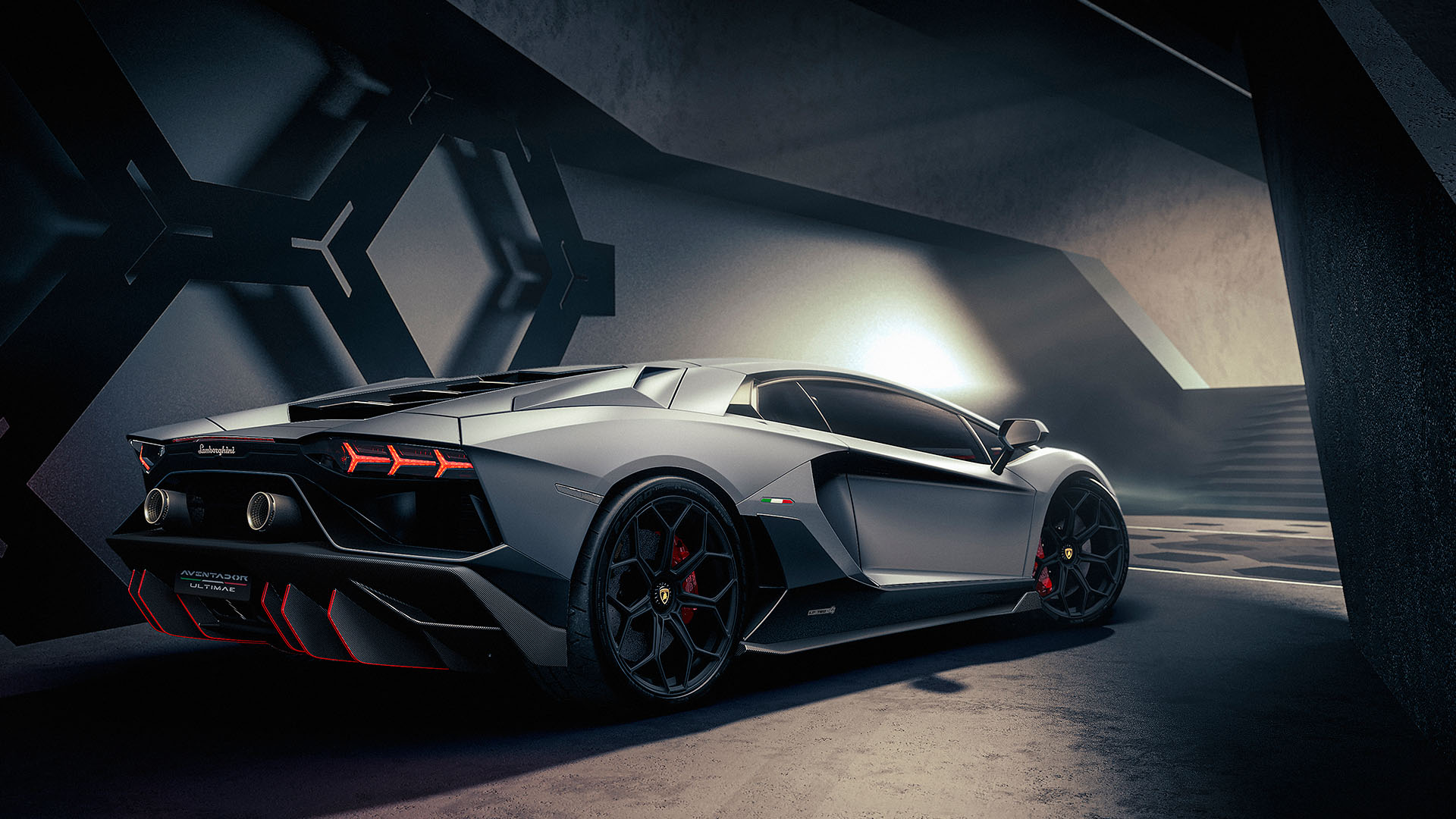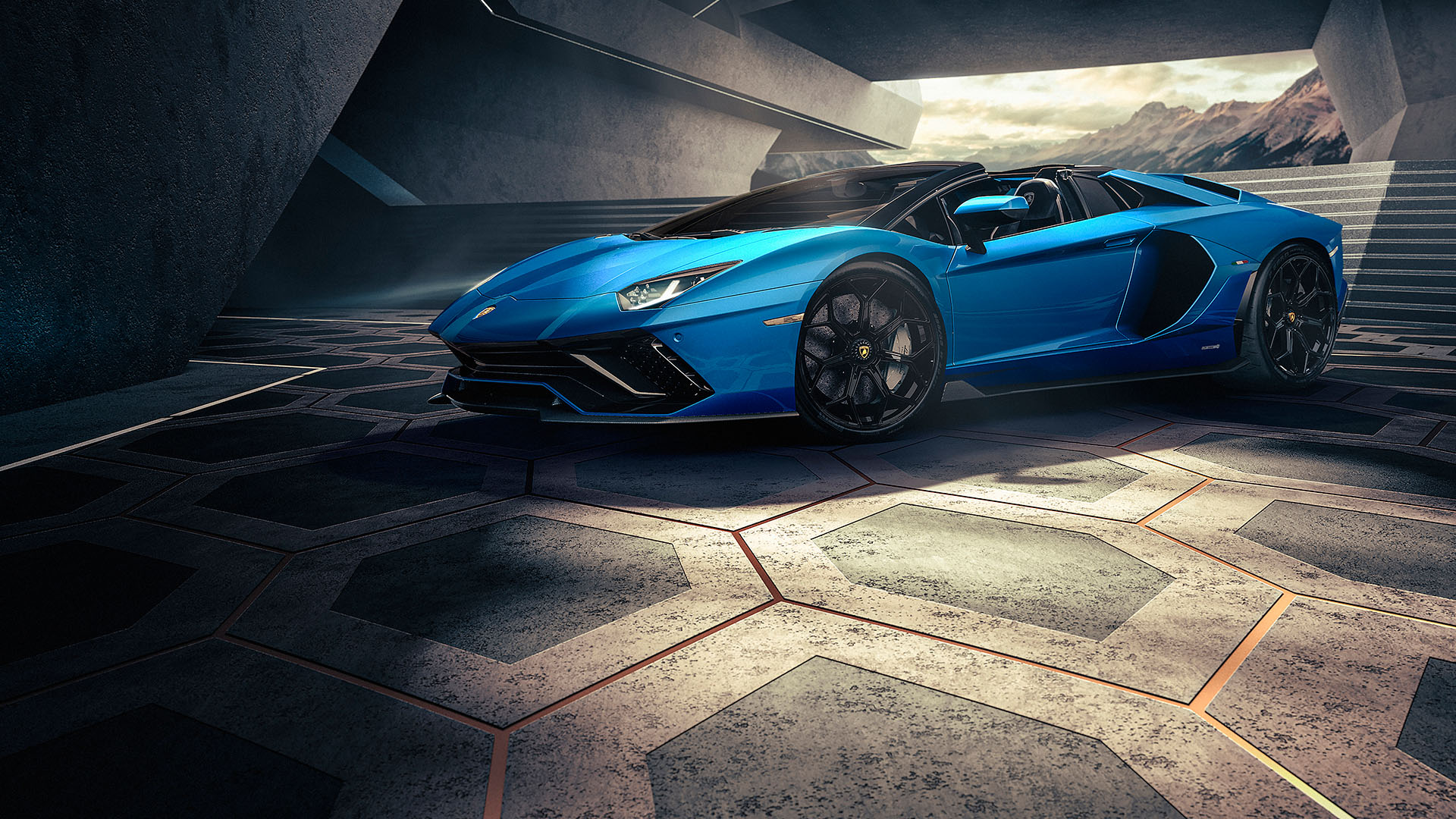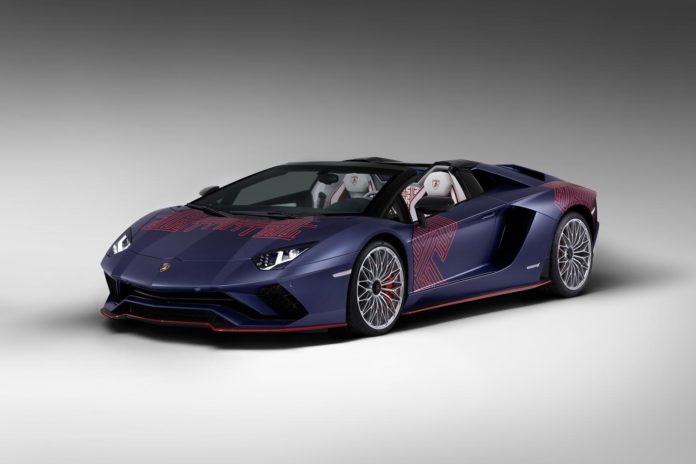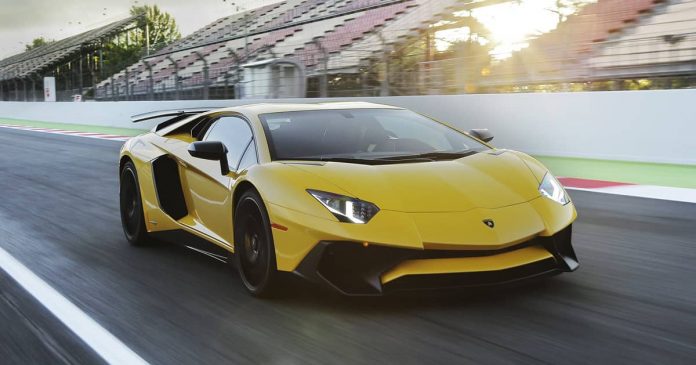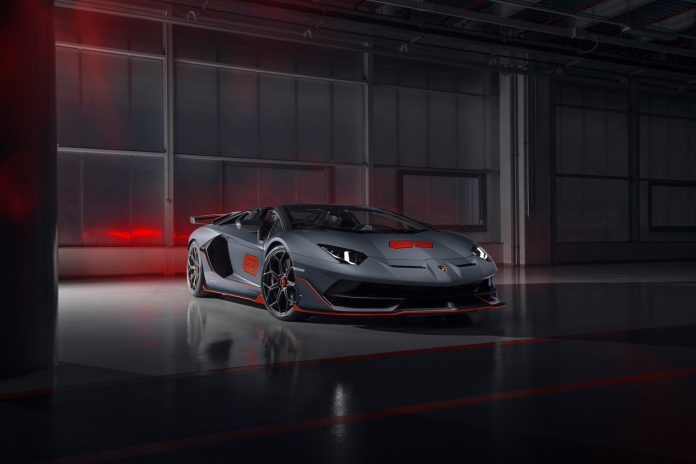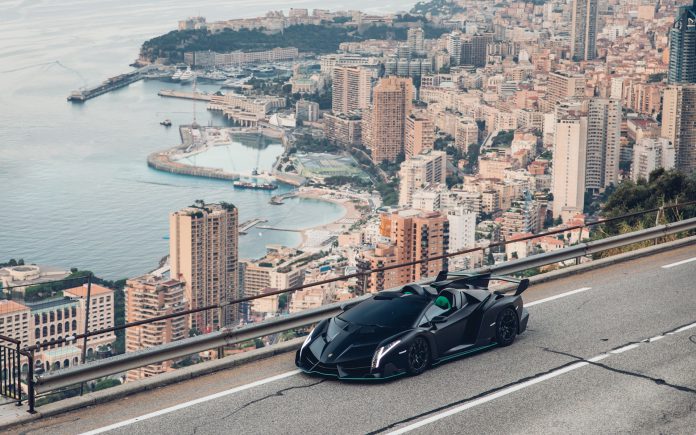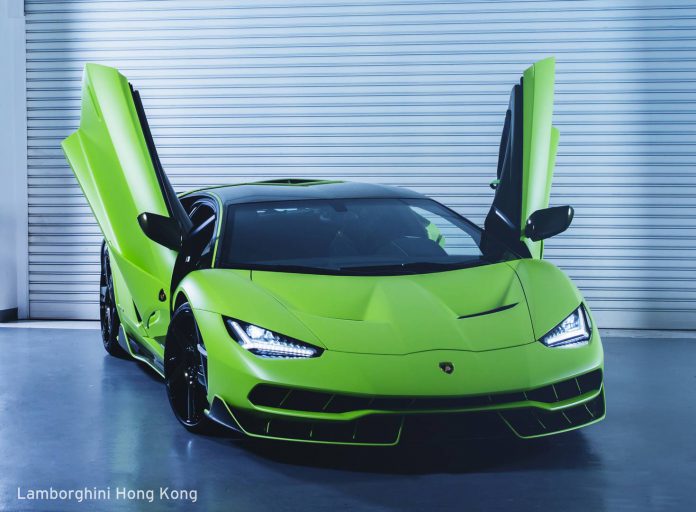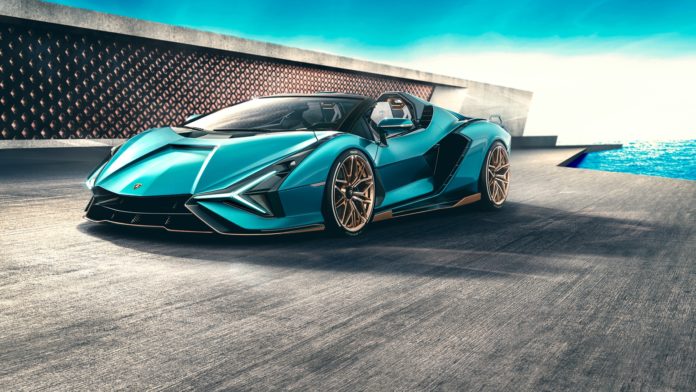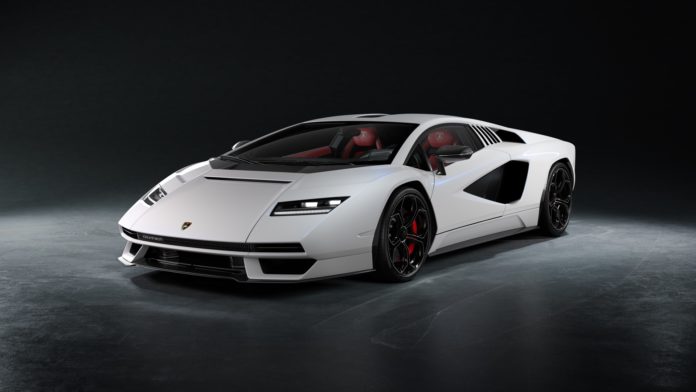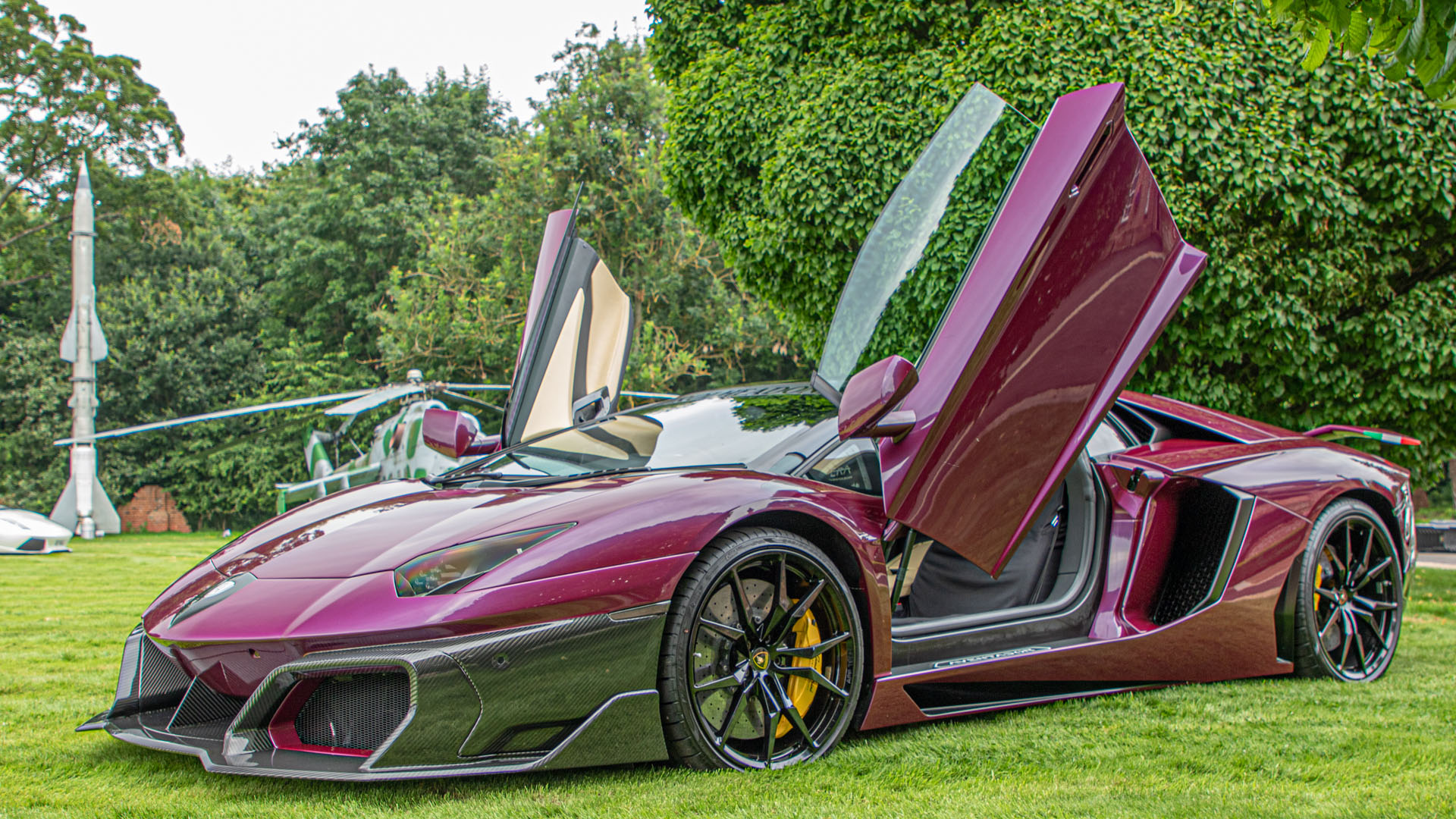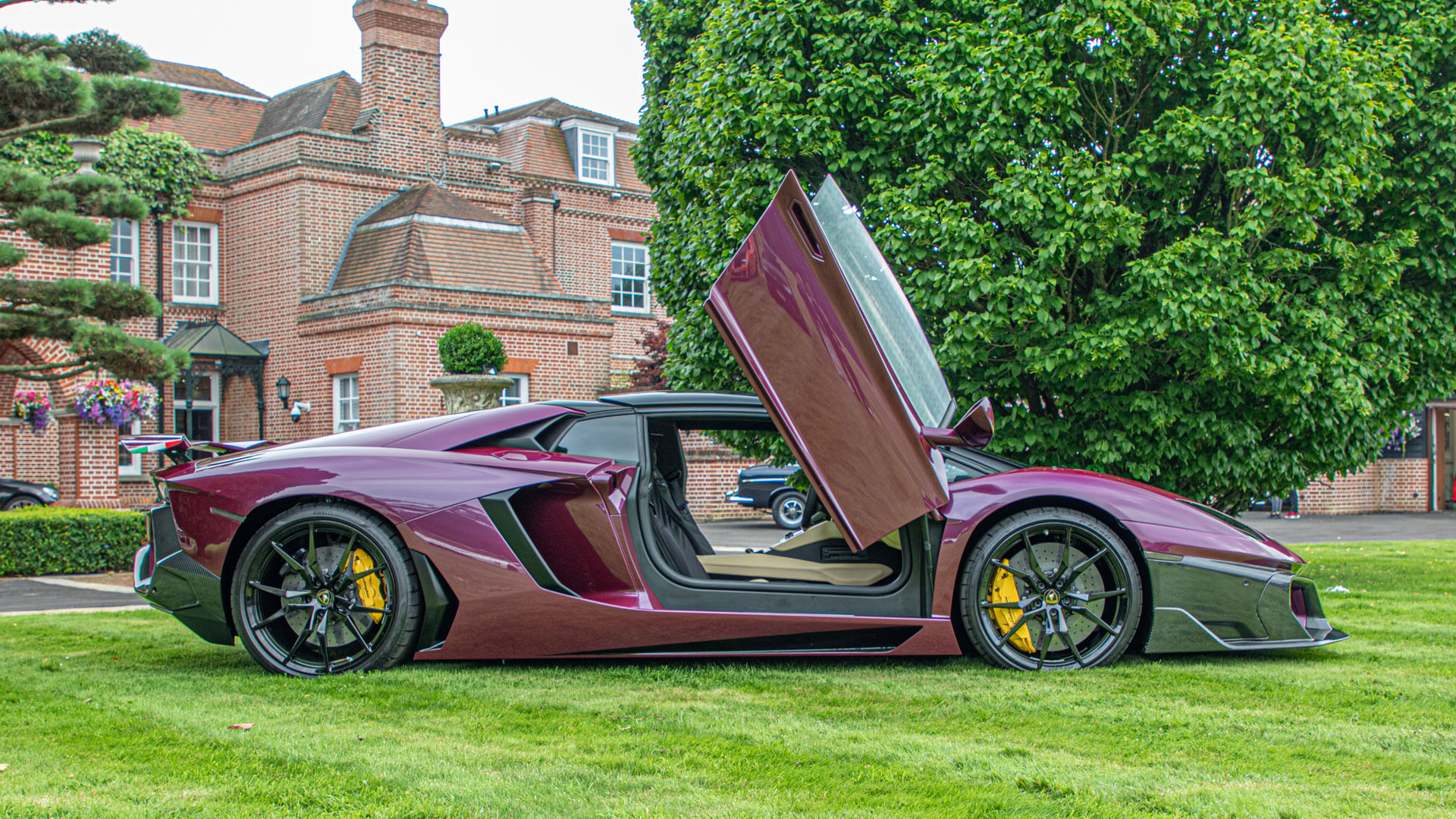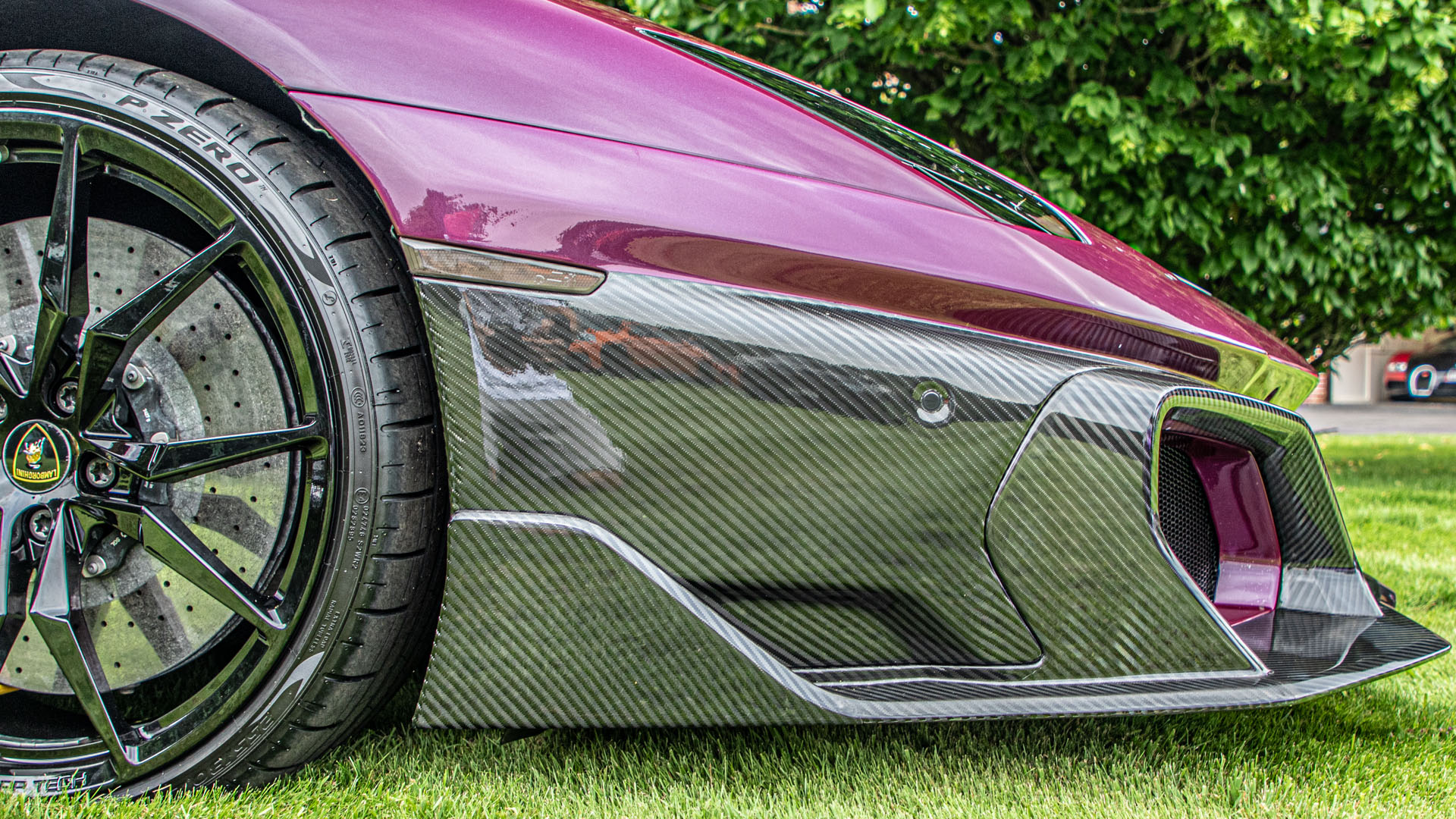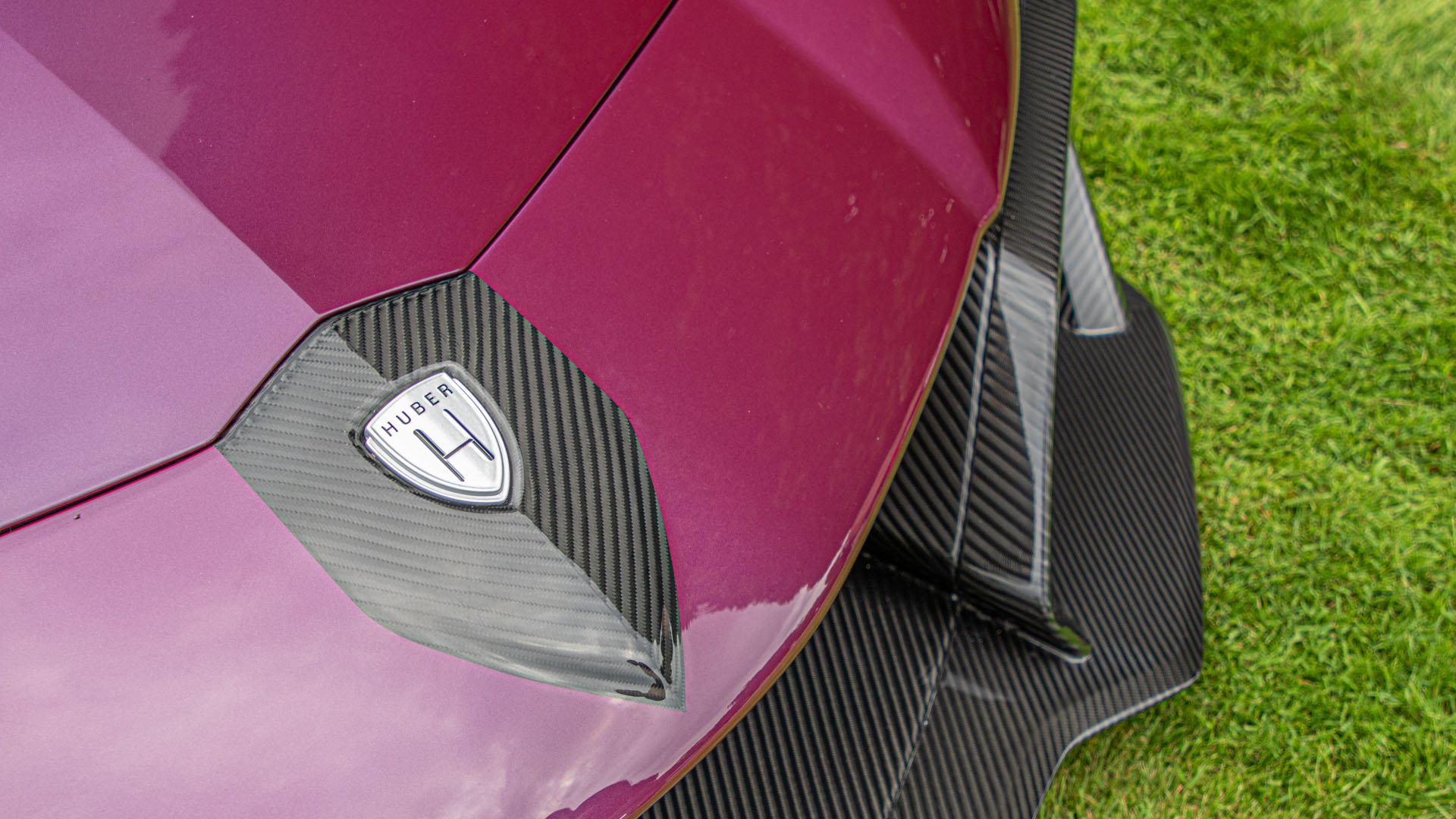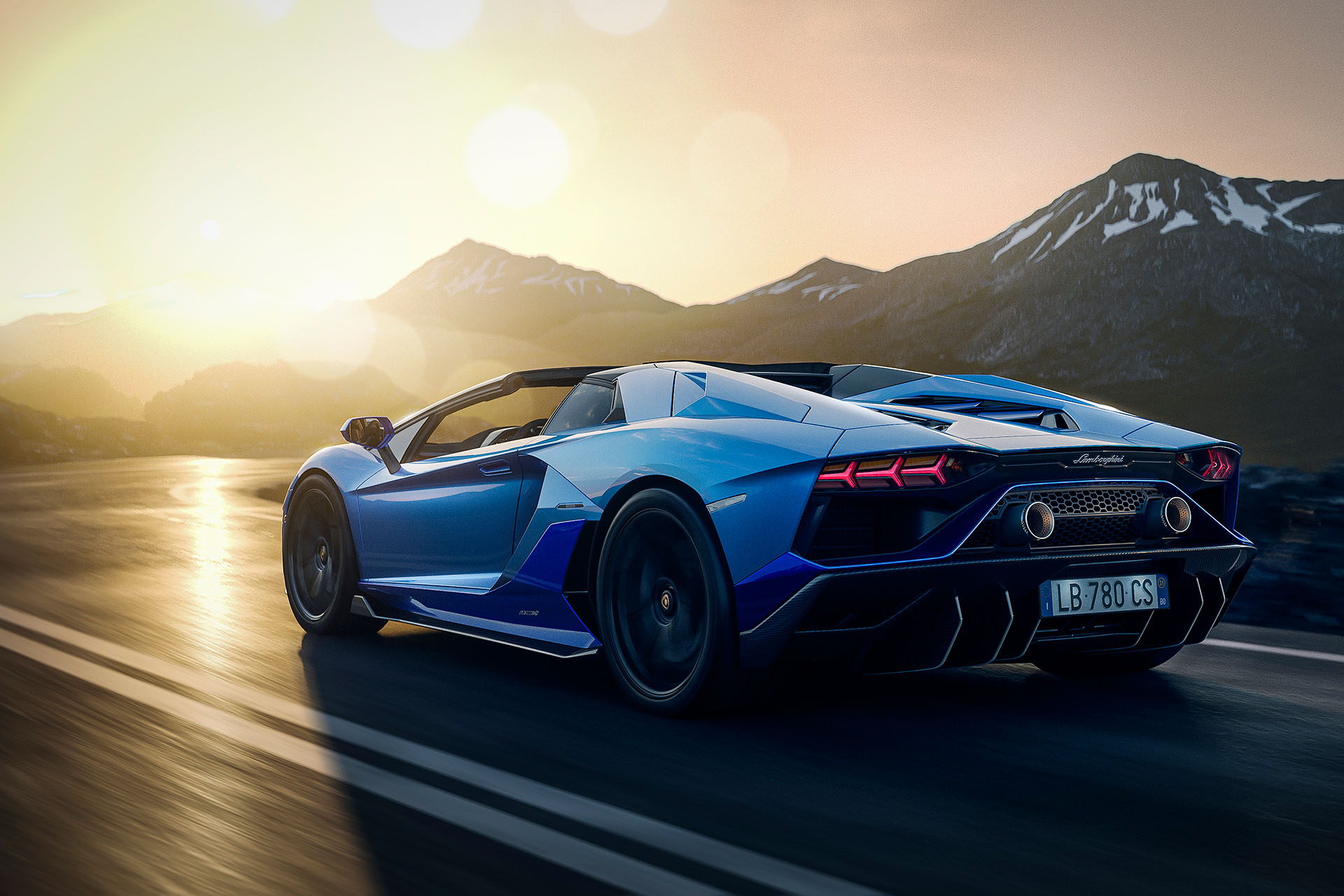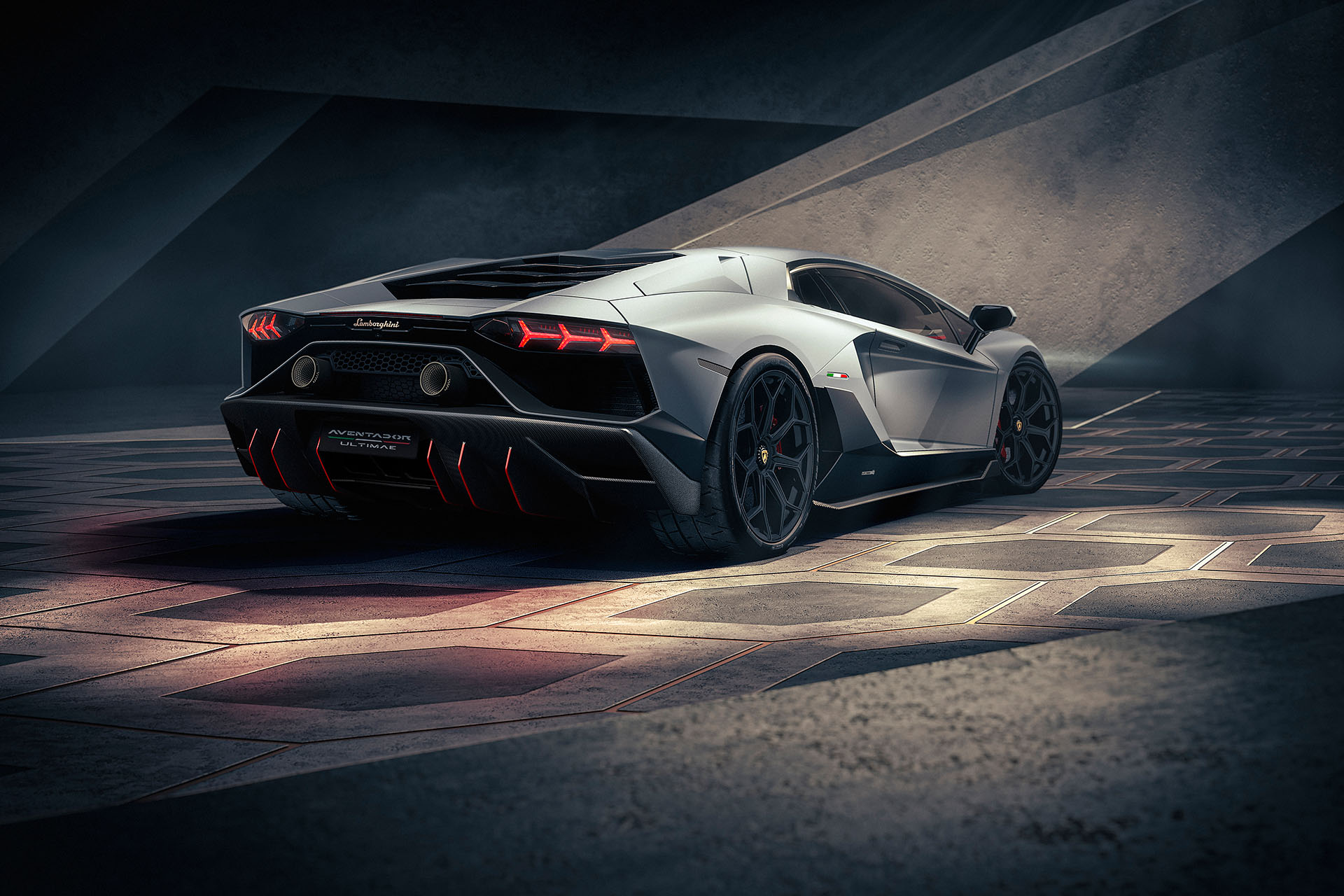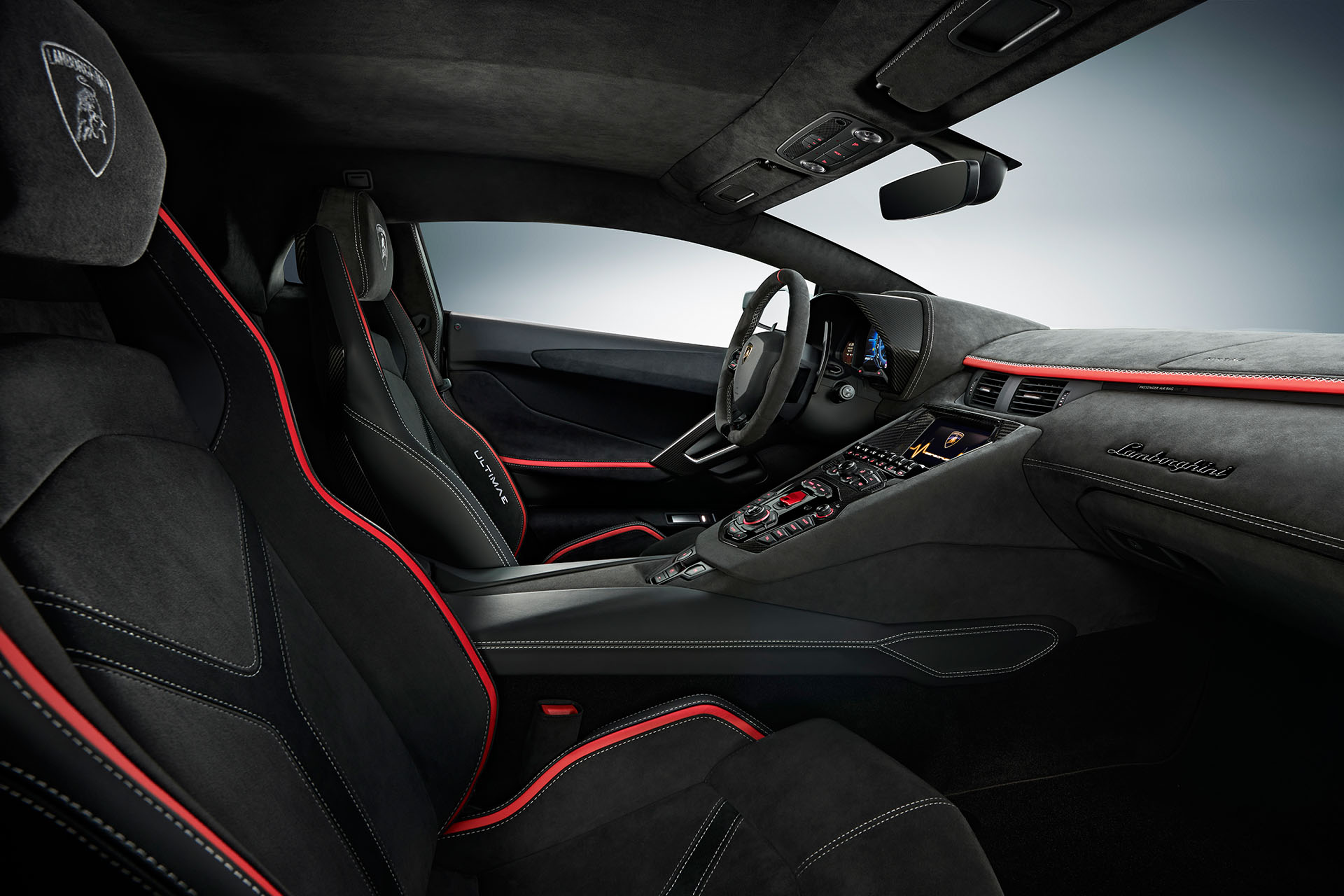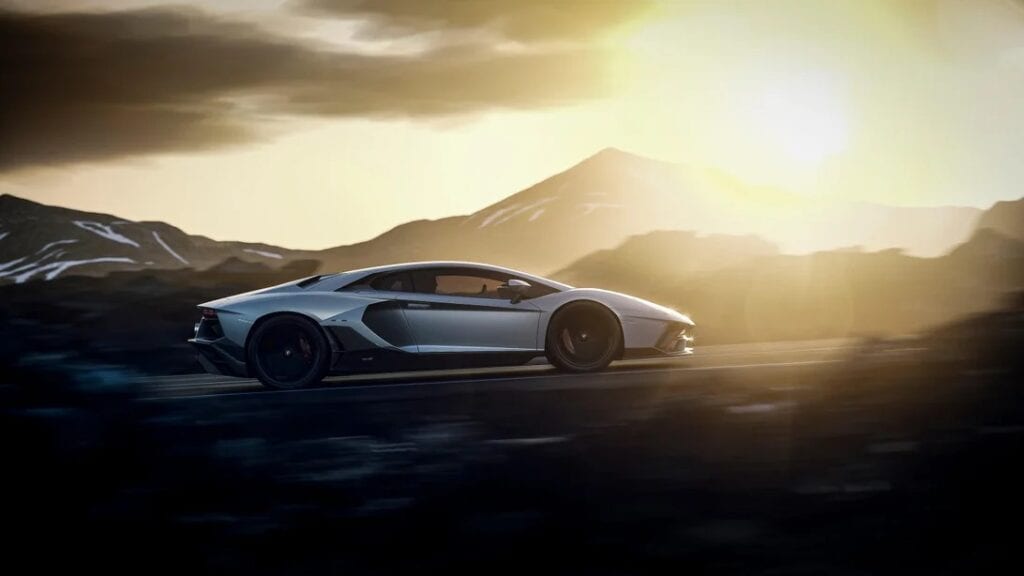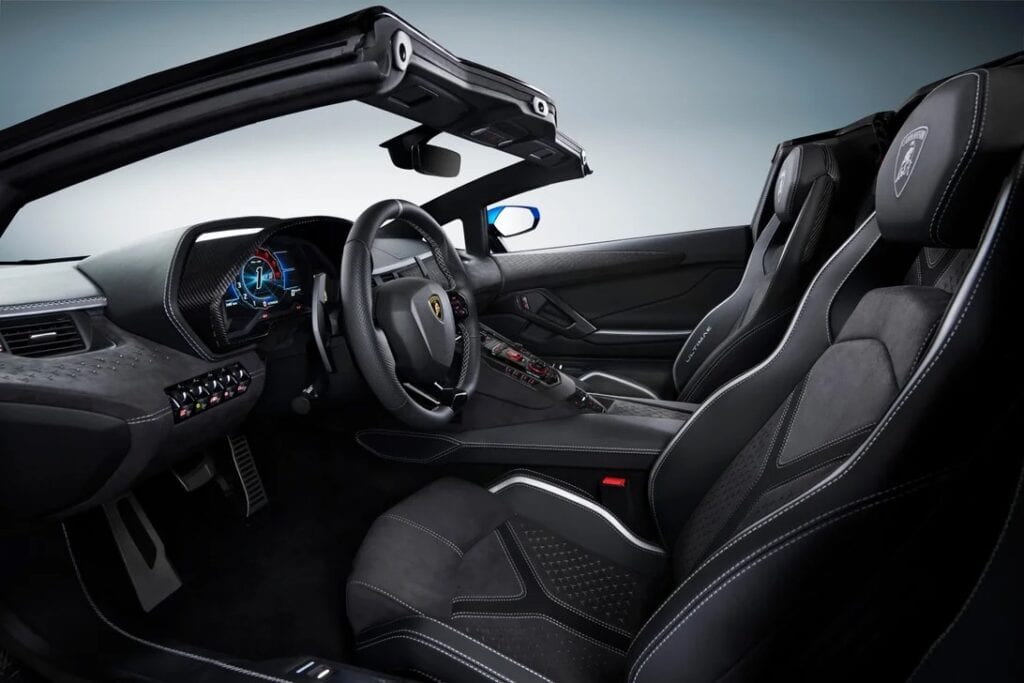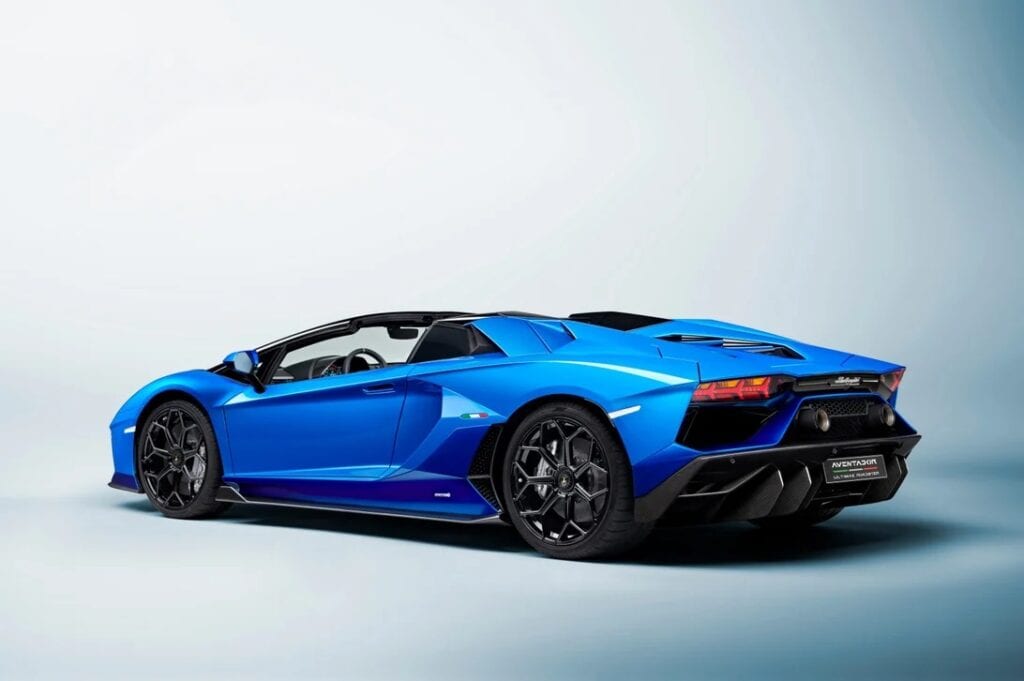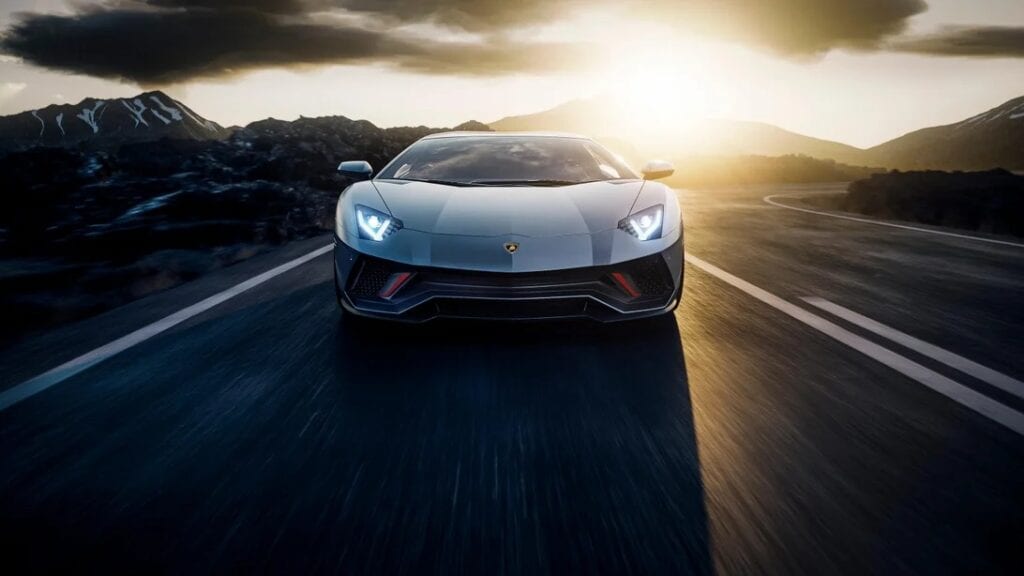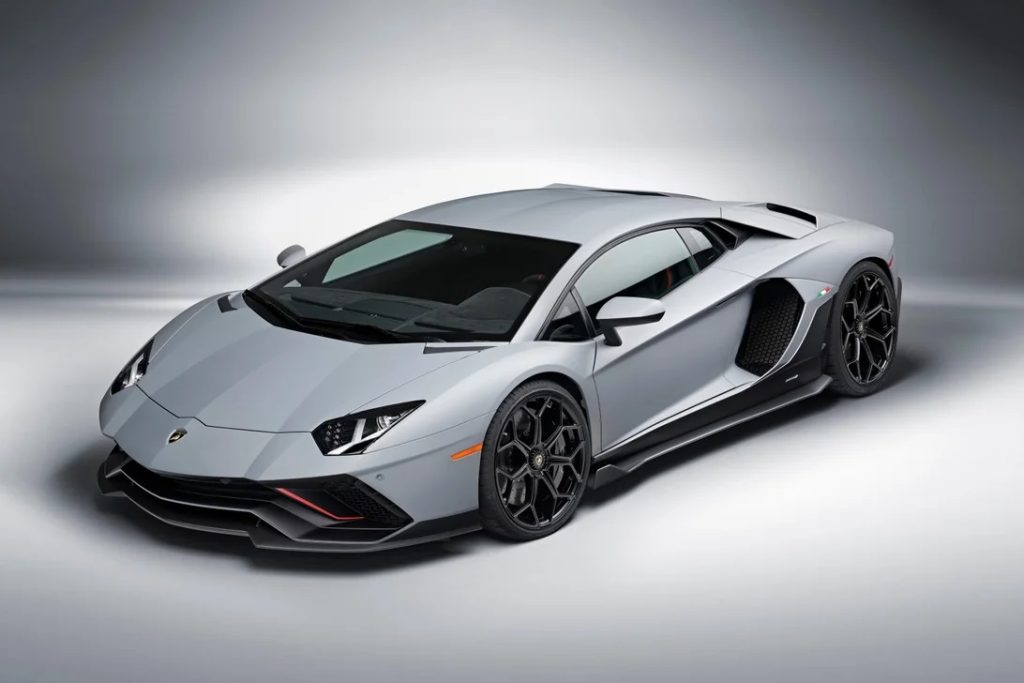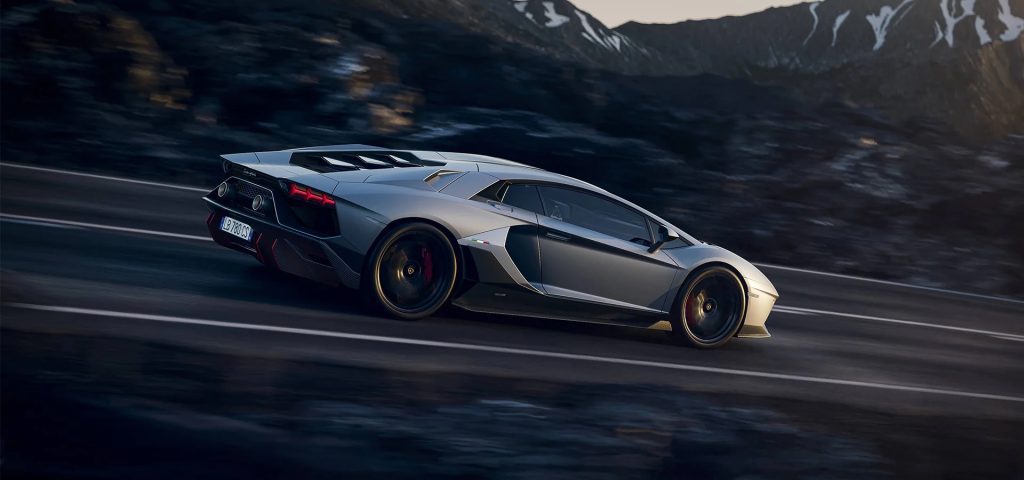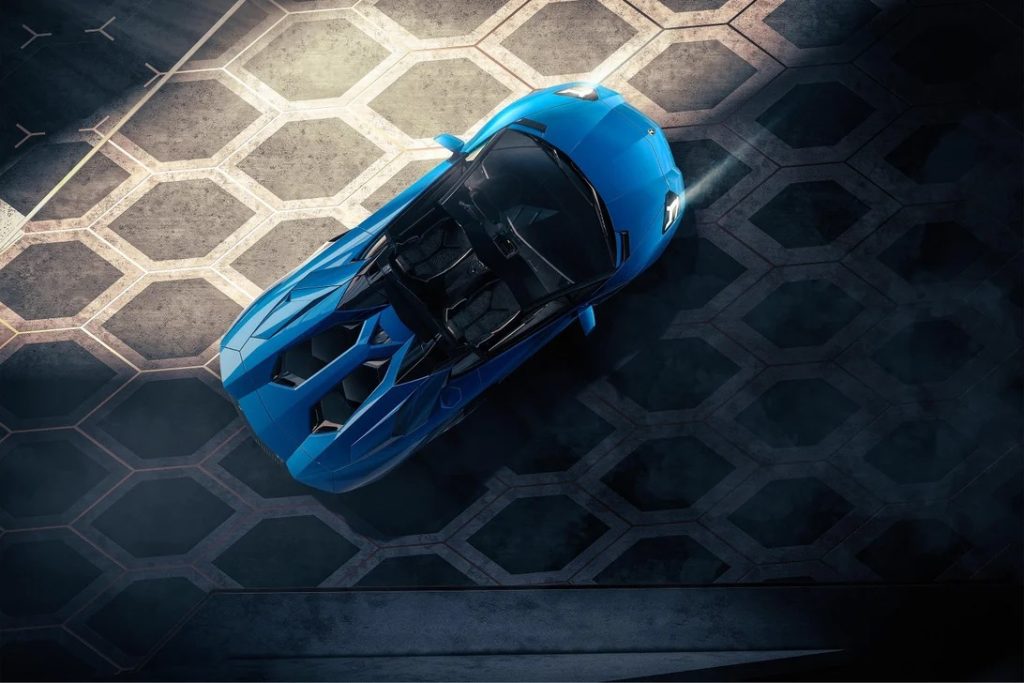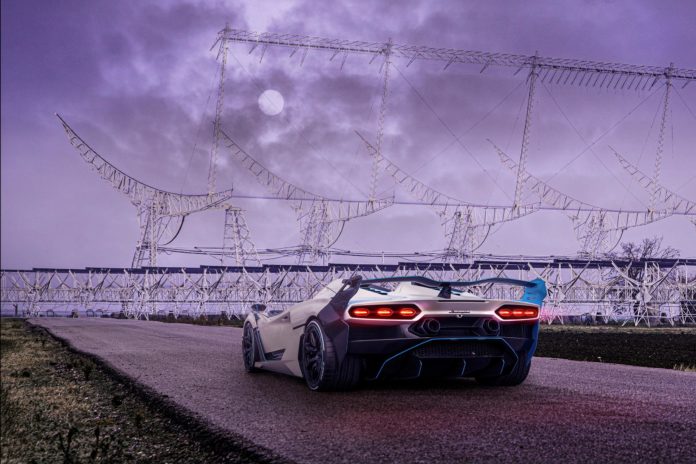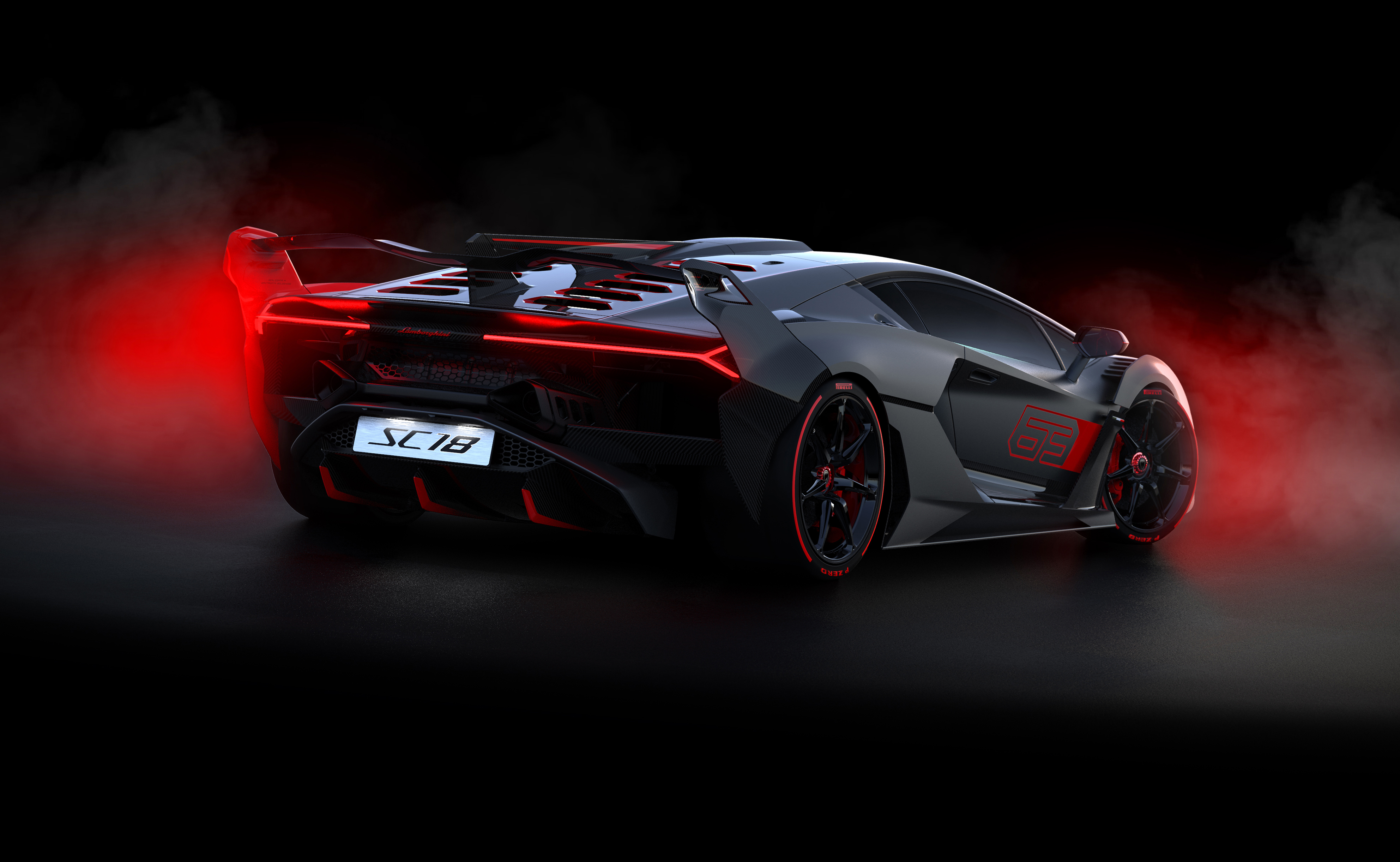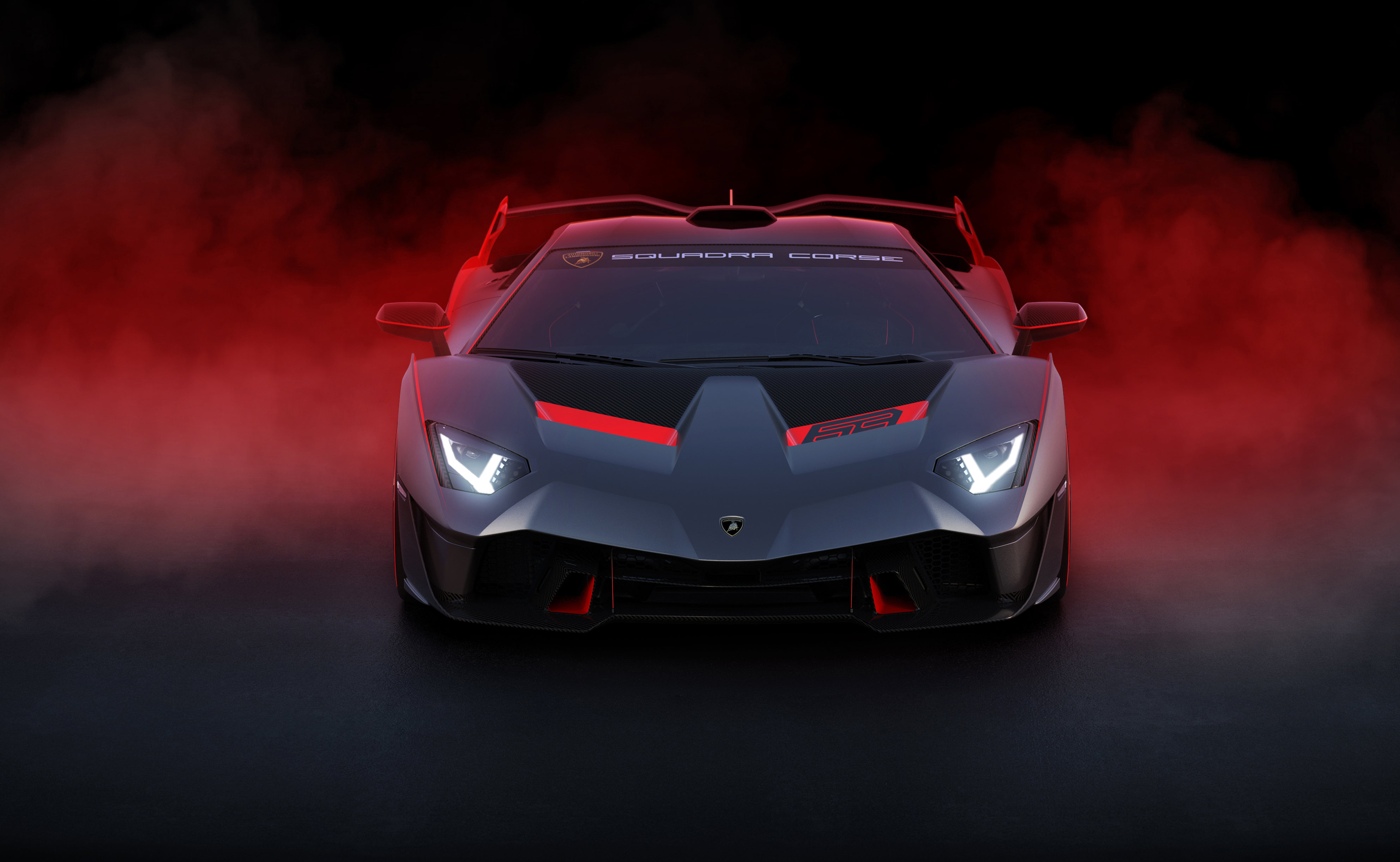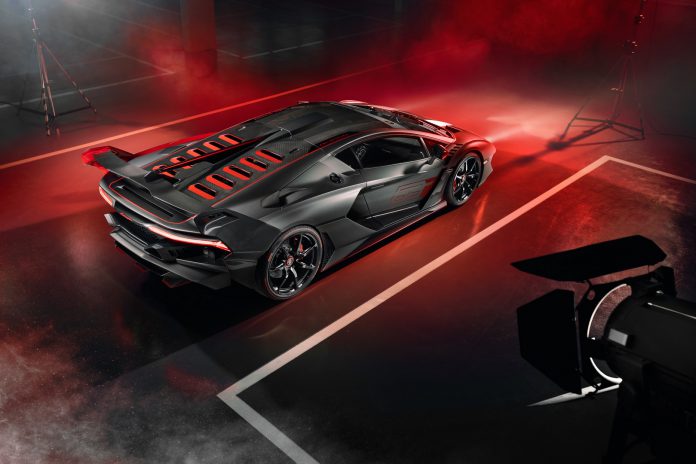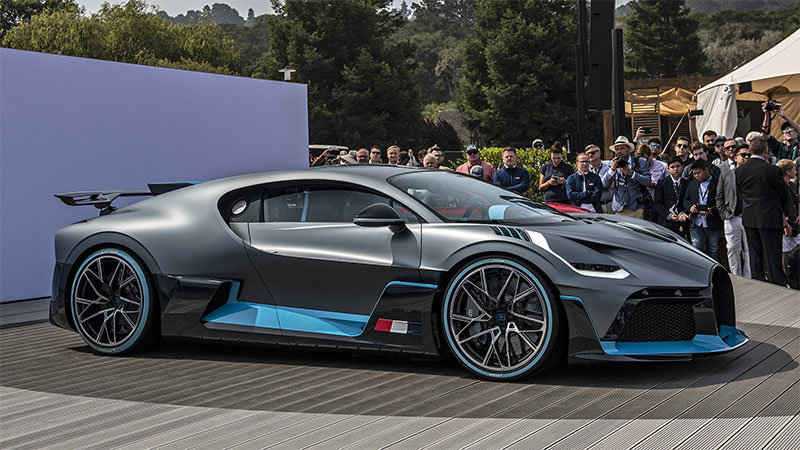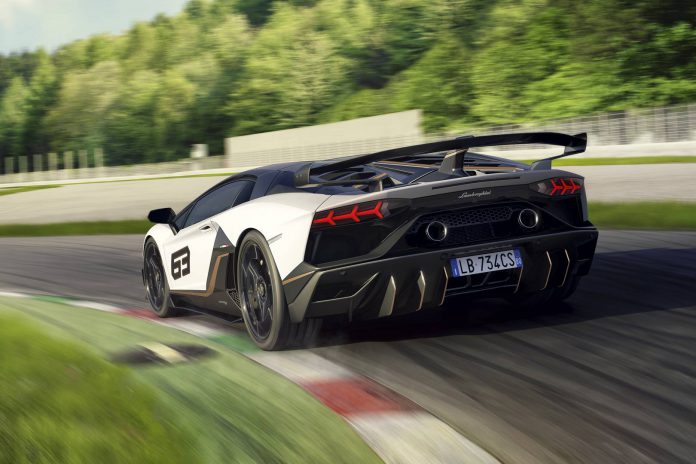2022 Lamborghini V12 hybrid test mule sighted
Did Automobili Lamborghini SpA drop the ball and accidentally drive the new V12 Hybrid model inside the factory compound, right in front of a camera lens with just a loose cover and some camouflage decals on the door, the new model we’ll only be seeing towards the end of 2022 or early 2023 as the replacement for the current flagship model, the Lamborghini Aventador … or is Lamborghini playing tricks to stir up interest even more?

 Via MOTOR1.com
Via MOTOR1.comI will post a video shot by YouTuber Varryx at the bottom of this article, it shows the car driving right in front of his camera, and I have to admit, she sounds great, but first let’s go over some details we noticed on the video and the subsequent photos that appeared online earlier today, the obvious elephant in the room are those exhausts:

 Via MOTOR1.com
Via MOTOR1.comCheck out the placement of those four tailpipes, grouped by two inside a hexagon tip, so far no big deal, the Aventador LP700-4 also had four exhausts, grouped inside one large tip, by the time the SVJ came around we saw two larger diameter exhaust tips moved a little higher onto the rear fascia, arguably to make the distance in piping shorter, but now those dual twin pipes sit really high at the rear, almost as high as on the Sesto Elemento we’ve seen years ago … the question is: are these real?

 Via MOTOR1.com
Via MOTOR1.comIs Lamborghini test driving the Aventador successor with a totally new exhaust that exits this high up, or is this a smokescreen to make us believe these are the actual exhausts, while in real life there are still two big pipes at about the same position as seen on the SVJ because the cover does show something in that area too? My guess is they took an old cover from an Aventador SVJ to keep most of this test mule out of sight and just cut a hole at the top for these new exhausts … at least I hope so, I love this look.
Judging from the area above the exhausts, it seems there is something above these tailpipes, could be a rear wing, could be bodywork with an air intake, remember the Aventador SVJ also had a center-mounted intake behind the engine cover, or it’s just a fake impression from using an SVJ cover as that model had a fixed rear wing, and this test mule actually has nothing there, but a wrapped-together oversized cover.

 Via MOTOR1.com
Via MOTOR1.comNow let’s look at the front, that’s not an Aventador front bumper, that’s for sure, not even the front fenders look like the current flagship, especially not the section at the front of the doors, there seems to be a vertical air vent present that will open with the doors, in traditional Lamborghini fashion, going up, as they have done since the Countach, a Lamborghini trademark by now, so I’m sure the new MY2023 top of the line from Sant’Agata will keep that style of doors.
The twirly camouflage makes it hard to distinguish details on the styling of this test mule, but let’s give it a try anyway: it looks like the typical Lamborghini design line … one uninterrupted line from the front bumper all the way to the rear fascia is kept alive for the upcoming model too, while there is a ‘swooping’ line from the bumper going up over the wheel arch only to go down a little again around the exterior rearview mirror before going up again into an air intake behind the side windows.
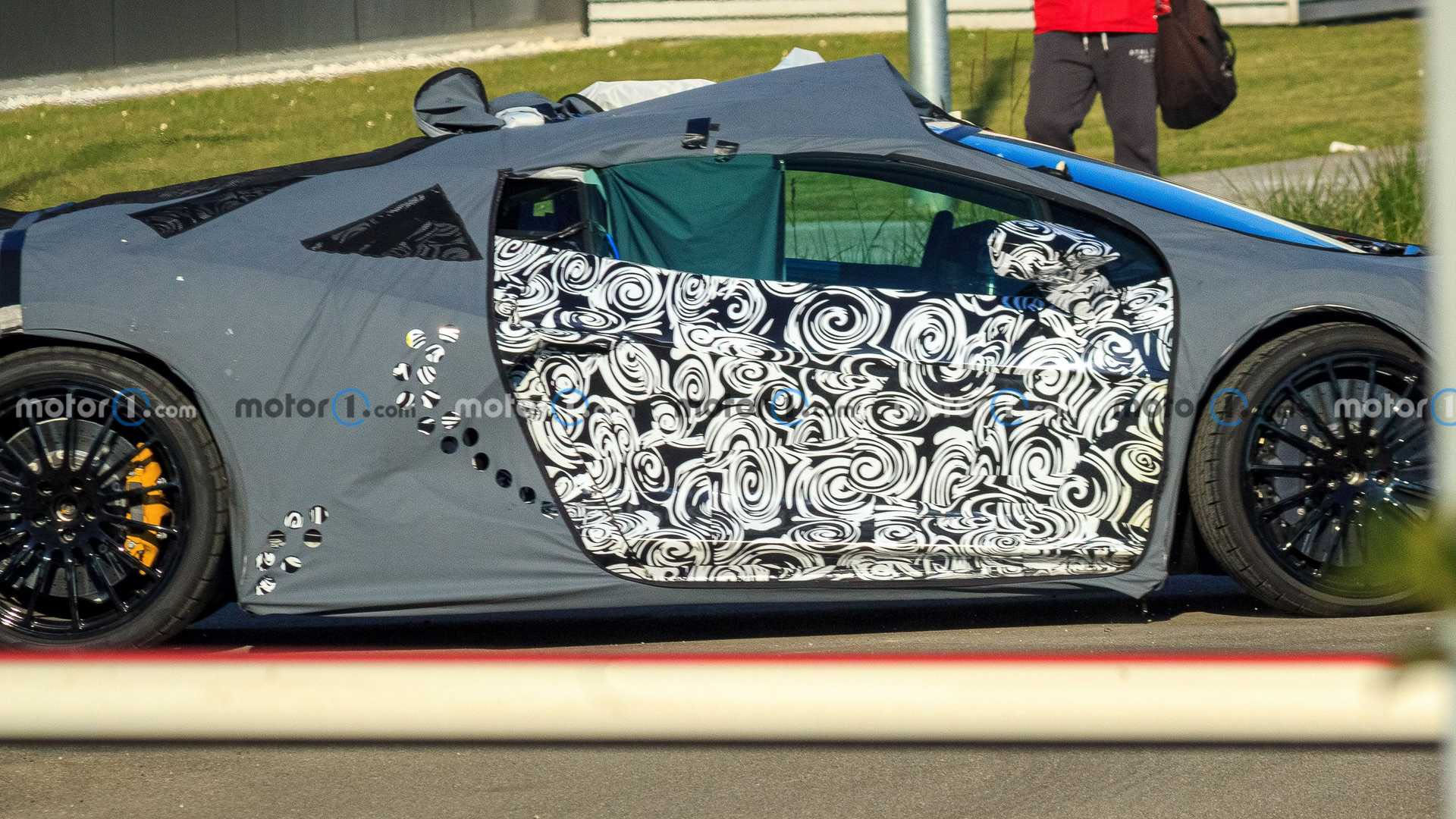
 Via MOTOR1.com
Via MOTOR1.comFrom what we can see on these photos, it looks like the side air intake behind the doors has a steep angle going down from the ‘hip-line’ before going forward about halfway down. And what’s going on at the top … it seems the cover is either catching a lot of air while driving this slowly, or there is a roof-mounted air intake hiding under that grey fabric … personally I think it’s another trick from Lamborghini making us believe there is an intake, perhaps later, on a performance version, but I doubt the initial release will have something as aggressive as that right from the start.
One thing that’s for sure, this test mule is not sitting on an Aventador chassis, or even an Aventador drivetrain … take a closer look at those wheels, both front, and rear. Apart from the fact that these are five-bolt style ones and not the center-lock wheels we’ve been seeing on the SVJ and Ultimae, take a closer look at the calipers, these are not in the same position as the ones on the Aventador. At the front the latter has the calipers hanging several degrees lower onto the disk, while at the rear we notice the inverse, this car has the brake caliper hanging lower compared to the Aventador, and the hand brake caliper is even in a completely different position … this is a new chassis, with a new drivetrain, and most likely already holding the brand new V12 engine.

 I sure wouldn’t mind if the Lamborghini Aventador successor would look something like this when we finally see it in 2023
I sure wouldn’t mind if the Lamborghini Aventador successor would look something like this when we finally see it in 2023We already knew that Lamborghini was developing a completely new V12 engine for the Aventador successor, it seems the 780 hp found inside the Aventador Ultimae was about the maximum power they could get from the current unit without stretching it too far, and adding electric motors onto the existing ICE V12 wasn’t an option apart from a supercapacitor and a 34hp unit for the Sián and Countach LPI 800-4 … so it was back to the drawing board to build a V12 from scratch.
So by 2023, we will be seeing a Lamborghini model come to market with a brand new V12 hybrid powerplant, how many electric motors and how much battery power will be helping the V12 propel the new car to speed isn’t published yet, and come to think about it, I’m not so sure we’ll be seeing a 6.5-Liter V12 again this time around, why would they, it is perfectly possible to have a smaller displacement V12 in the successor and still have a similar power output, think about it, 700 hp from the V12 with 4 to 5-liter of displacement, and an additional 300 hp from two 150hp electric motors … power from the V12 to the rear wheels, electric power to the front wheels, and we still have four-wheel drive, and we get 1,000 hp or more.

 If you look closely at the photos of the test mule that were captured, it does look like the side profile might look similar to this render.
If you look closely at the photos of the test mule that were captured, it does look like the side profile might look similar to this render.Sources state the Aventador will be replaced by 2023, and while that might be accurate, I think we’ll be seeing the last of the Aventador coming off the assembly line in Sant’Agata by August 2022 already. Lamborghini needs time to covert the current Linea Aventador for the new model, which is a hybrid, will require some serious modifications to the line, and what better time than to start during the summer holidays of 2022, when the factory is closed anyway, and as we’ve seen with the Linea Huracán, they just fence off an entire section of the factory during the construction.
Let’s do some math here … the Aventador SVJ Coupe and Roadster are very close to being finished, there are just a few more Sián and Sián Roadster to complete, production of the Countach LPI 800-4 is about to start, and they will only make 112 of them anyway, and I’m sure the first units of the Ultimae and Ultimae Roadster are already being built as we speak, and with 350 Coupe and 250 Roadster, all of which are sold out already, this adds up to less than 750 cars to be finished on Linea Aventador before it becomes obsolete … if you think about the fact they finished nearly 600 units in the first months of 2021, all of the remaining V12 models, be it NA or with the supercapacitor, will be completed by August 2021.


I did one more render of the rear of the upcoming model, at least how I think the new Lamborghini V12 Ibrido will look if they keep those amazing exhaust pipes, which I for one really like, and even the entire look and feel of the above render works for me, it’s clearly a Lamborghini, low, wide, and brutal … but for now, check out the video below, and hear the thunder of the Raging Bull, courtesy of Varryx:
[embedded content] [embedded content]

